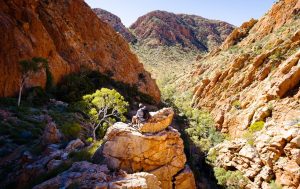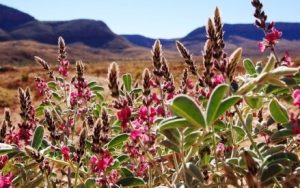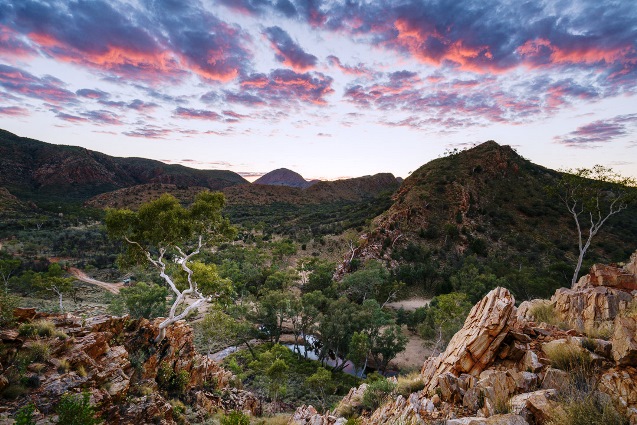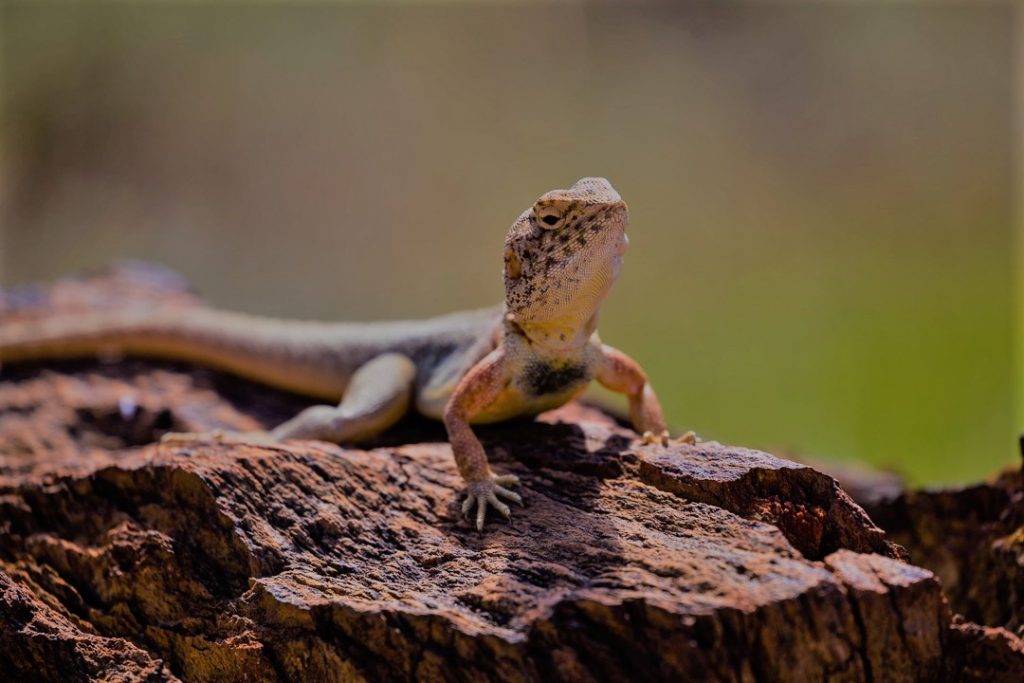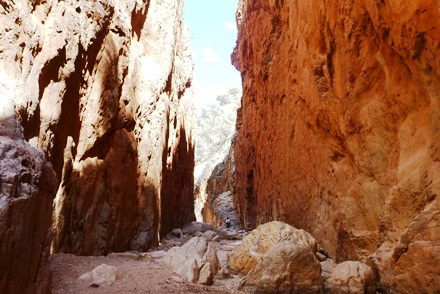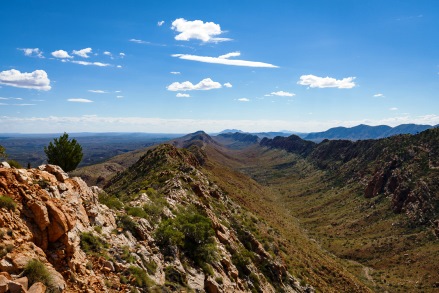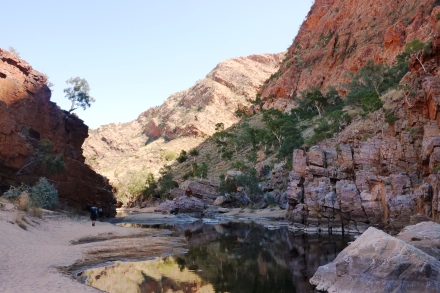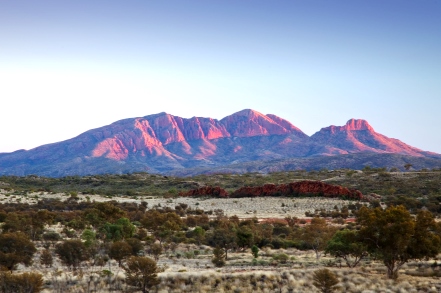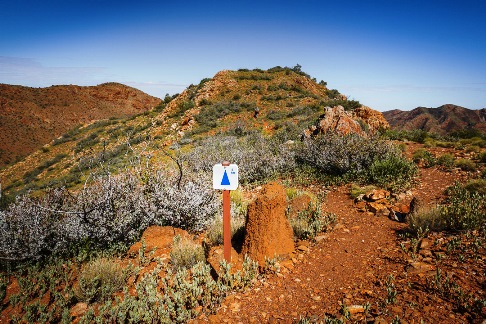The Larapinta Trail is an extended bushwalking trail running west from Alice Springs (Telegraph Station) to Mount Sonder (Rwetyepme), along the spine of the West MacDonnell Ranges. It was completed in 2002, and its 223 kilometres are fast gaining a reputation for offering one of the finest walking experiences in the world.
The steep red slopes of the West MacDonnell Ranges rise dramatically from the Central Australian desert. They typify the rugged landscapes of the Red Centre with the changing hues of their mountain peaks, rolling hills and dry river valleys made famous in the paintings of Albert Namatjira.




